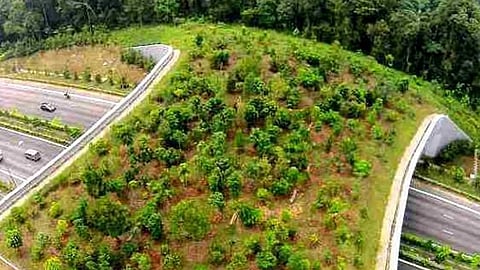Delhi-Mumbai Expressway: India’s first and longest wildlife corridor developed!
For the first time in India, a dedicated wildlife corridor has been introduced along the Delhi-Mumbai Expressway. The 12-km stretch, passing through the buffer zone of Rajasthan’s Ranthambore Tiger Reserve, features five wildlife overpasses and a 1.2-km underpass, the longest in India, designed for tigers, bears, and other endangered species.
Expressway designed to let wildlife thrive
This is India’s first expressway built with wildlife conservation at its core, a landmark project that seamlessly blends infrastructure with ecology. Spanning 12 kilometres through the buffer zone of Ranthambore Tiger Reserve, the corridor features five elevated overpasses (each 500 meters long) and a 1.2-kilometre underpass, making it the country’s longest continuous wildlife passage.
Designed by NHAI in collaboration with the Wildlife Institute of India, the project prioritises animal safety with 4-meter-high boundary walls, sound barriers, and terrain-sensitive construction. To further reduce human-wildlife conflict, nearly 35,000 trees were planted, rainwater harvesting systems were installed every 500 meters, and drip irrigation methods were used to conserve water.
A model for future highways
The success of this initiative lies in its meticulous execution, zero wildlife casualties were reported during construction, due to 24/7 monitoring and personnel stationed every 200 meters to safeguard animal movement. Post-construction camera footage has already captured tigers and bears using the overpasses and underpasses, offering clear proof that the corridor is functioning exactly as intended.
Praised as a model for future projects, the corridor shows how sustainable infrastructure can coexist with ecological priorities, setting a new national benchmark in green highway development.
To get all the latest content, download our mobile application. Available for both iOS & Android devices.

